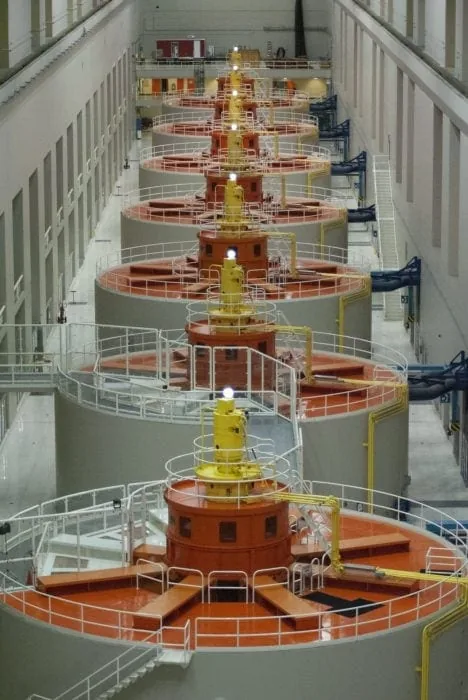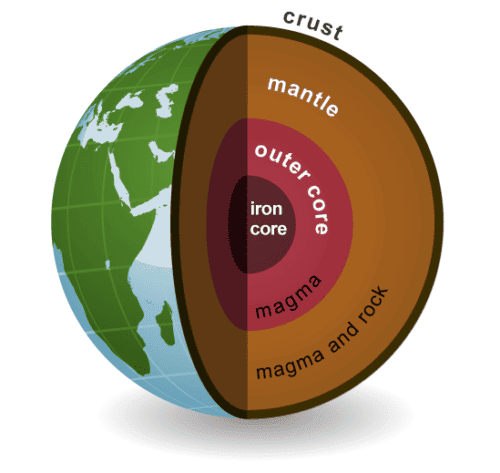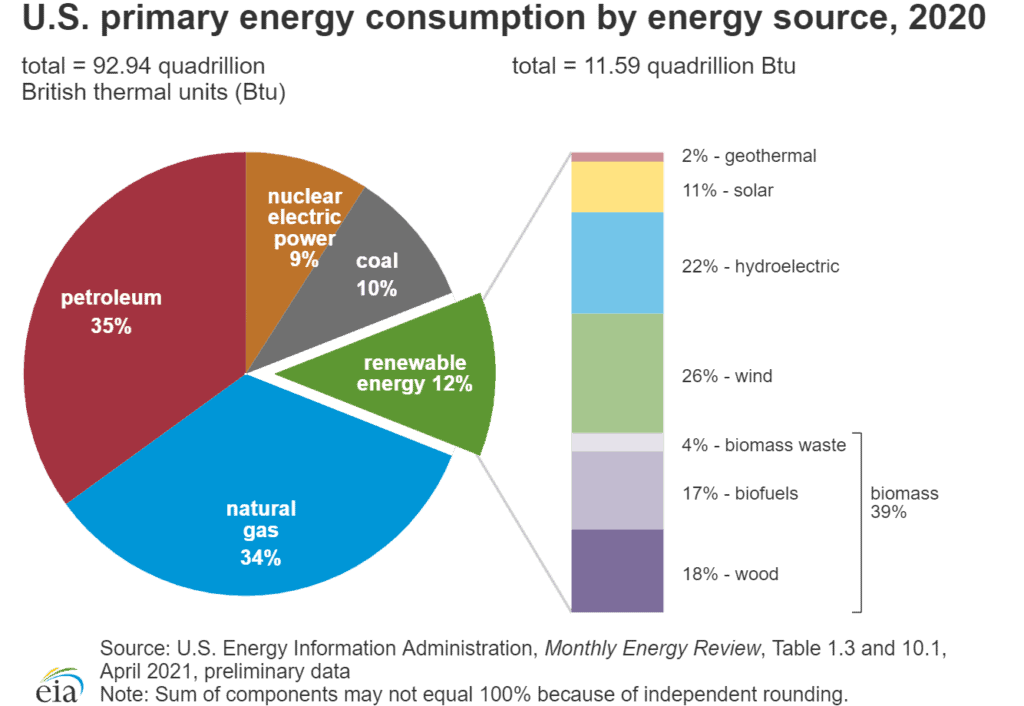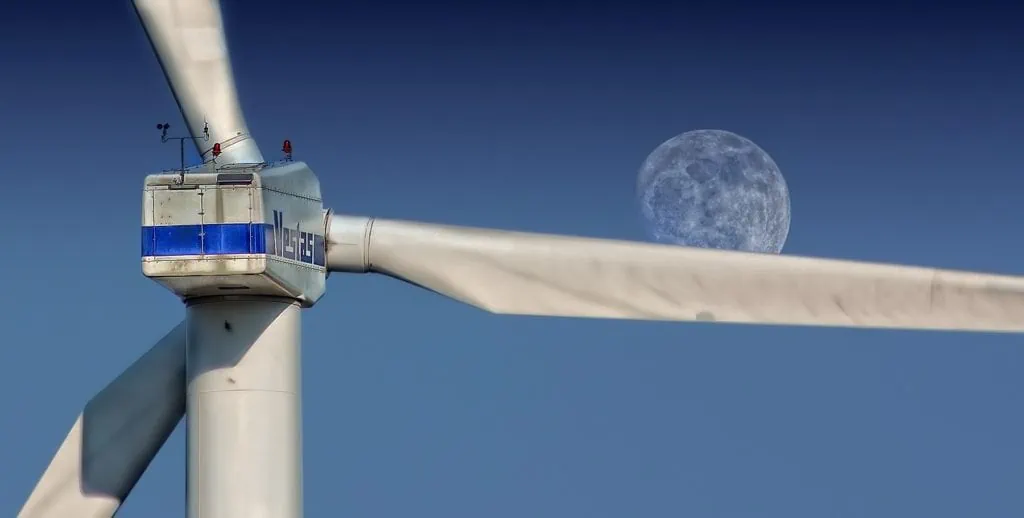“Magnetism is a force, but it has no energy of its own,” says David Cohen-Tanugi, vice president of the MIT Energy Club and a John S. Hennessy Fellow in MIT’s Materials Science and Engineering department. Still, he adds, “magnetism is extremely useful for converting energy from one form to another. About 99% of the power generated from fossil fuels, nuclear and hydroelectric energy, and wind come from systems that use magnetism in the conversion process.”
Magnetism has long played an important role in energy conversion, and now those principles of conversion are being applied to existing and emerging renewable and green energy technologies. Adams’ magnets can be used in turbines and generators essential in converting mechanical energy into electric energy. Our magnets also play a role in countless holding applications within renewable energy resources.
What IS Green Energy?
Green energy is energy generated from natural resources that are constantly replenished, such as sunlight, wind, or water. Green energy avoids mining, drilling, and other operations that can damage ecosystems, and it does not release pollutants into the air. Common examples of green energy include:
- Wind Power
- Hydropower
- Solar Power
- Geothermal Power
Here’s a look at how the United States consumed energy in 2020:
What Magnetic Technologies Are Incorporated in Wind Power?
Permanent magnet synchronous generators use the magnetic field of strong rare-earth magnets to convert the energy from the spinning blades into electricity. These generators can operate at low speeds, which allows them to be powered by the turbine shaft directly, eliminating the need for a gearbox. This reduces the weight of the wind-turbine nacelle. The elimination of the gearbox results in improved reliability lowered maintenance costs and improved efficiency. The properties of magnets that allow designers to eliminate mechanical gearboxes from wind turbines illustrate how magnets can be used innovatively in solving both operational and economic problems in modern wind turbines. Learn more: https://www.windsystemsmag.com/applications-of-magnets-in-wind-turbines/
Adams can help specify neodymium magnets with temperature stability and optimal magnetic properties to ensure maximum efficiency in permanent magnet wind generators. Contact us for more information.
What Role Do Magnets Play in Hydropower?

Here’s where the magnets come in: Water flows through the dam and turns a large wheel called a turbine. The turbine turns a shaft which rotates a series of magnets past copper coils and a generator to produce clean, renewable electricity. Learn more: https://fwee.org/northwest-hydropower/inside-a-hydropower-generator/
Additionally, magnetic gearboxes can help lower the cost of hydropower in smaller water flows or channels where there is no gravity drop, optimizing the kinetic energy or velocity of the volume of water flowing through a channel.
Tidal energy is a form of hydropower. Instead of a change in the elevation of water creating the flow, tidal energy uses the moon’s gravitational forces on large bodies of water to create the flow. Tidal power relies on the flow of tidal water to rotate underwater turbines that generate electrical energy. Water flows due to the natural rise and fall of tides caused by the gravitational interaction between the sun, the moon, and Earth. Learn more: https://www.pnnl.gov/explainer-articles/tidal-energy
Customers looking for support specifying neodymium magnets with temperature stability and optimal magnetic properties to ensure maximum efficiency in hydropower generators can rely on the experts at Adams.
What Role Do Magnets Play in Solar Power?
The cleanest and most abundant of all energies, solar power uses solar panels to convert energy from the sun into thermal or electrical energy. In the manufacture of these solar panels, thin films are deposited in multiple layers through a process called “sputtering” or PVD (physical vapor deposition). To optimize this process, magnetrons (permanent magnet assemblies) improve the utilization of the material being deposited (referred to as the target material). Learn more: https://www.energy.gov/eere/solar/how-does-solar-work
The experts at Adams can specify magnets (Alnico, Hard Ferrite, Samarium Cobalt, and/or Neodymium) with optimum magnetic field profile to ensure maximum efficiency in magnetrons.
What Role Do Magnets Play in Geothermal Power?

Geothermal energy is extracted in two ways. At geothermal power plants, drills are used to tap into a known geothermal well, such as a hot spring or volcanic area, a few miles into the earth. The hot water from these wells is then pumped back to the earth’s surface, where it cools quickly, turning the water into steam that spins a turbine connected to a generator, producing electricity. Heat pumps are also used to tap into geothermal energy near the earth’s surface, pumping cold water through an underground loop to heat it, bringing this heat back to the building above it.
Magnets are used to create electrical currents in the geothermal process. As the hot fluid expands and creates the mechanical energy needed to turn the turbine blades, the turbine spins magnets inside a large coil, creating an electrical current. Learn more: https://www.energy.gov/eere/geothermal/how-geothermal-power-plant-works-simple-text-version
The Adams team is here to support you with magnets optimizing temperature stability and magnetic properties to ensure maximum performance in your specific applications. Contact us today!





